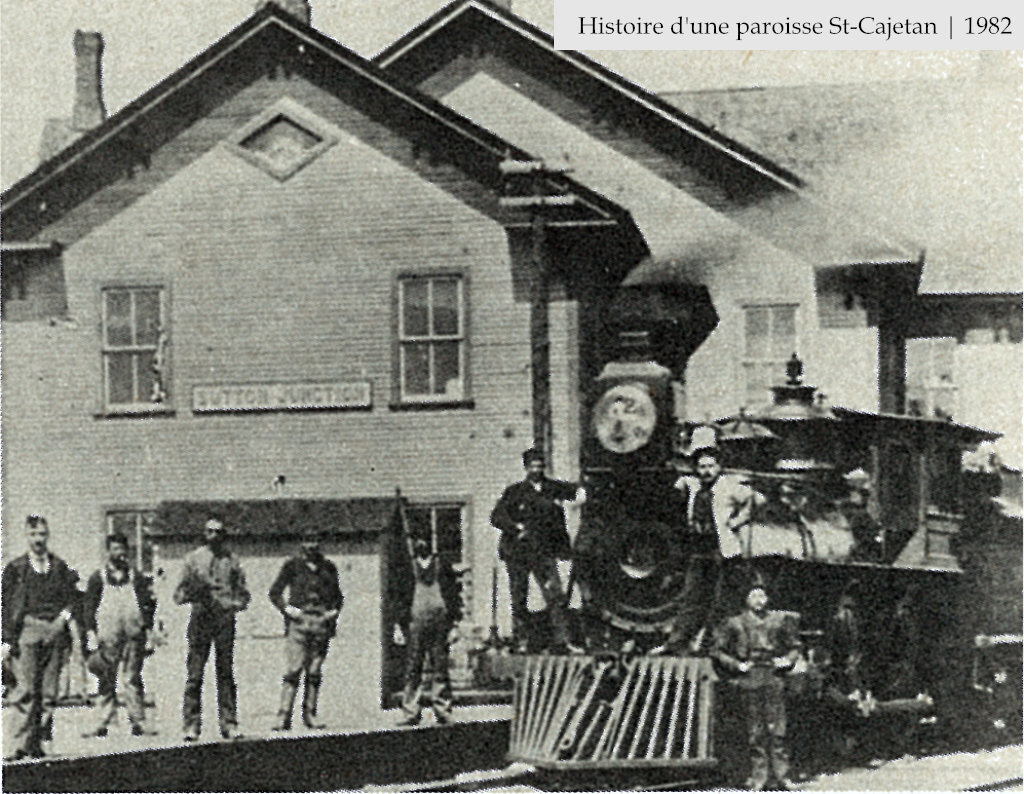Mines
Since about 80 years, Potton had its underground mines exploited. It is possible that a search for minerais has taken place on your very property. First of all, presence of copper was known of as early as 1841 in Brome and Sutton Townships. The Bolton mine did not produce until 1865, according to Leon J. Darrah in "Yesterdays of Brome County" Vol. Ill. "Over 500 copper discoveries were made in the Eastern Townships during the bonanza years after 1860". A ton of copper went up to 80 $ on account of the American Revolution, during which the metal would be used for the manufacturing of munitions. "Only a few of these mines became producing mines,with fewer still that remained active after 1867".
Among these, the Lake Memphremagog Mine seems to have been of the more successful, since it was still in operation in 1910. It was located on the slope of Hogsback Mountain, east of Potton. The ore was up to nine percent of copper, and there were also small amounts of gold. Having no crusher, the Company would carry the precious ore - bearing rock by wagon and horses either to Newport or even to Windsor Mills. As far as 1871, deposits of talc and soapstone were discovered and mined to the amount of 300 ton shipments. This happened in Bolton Townships, probably where South Bolton's Baker Talc Mine is now situated. But in1938, Baker Mining and Milling Co. Ltd. installed a mill in Highwater, and even there talc and soapstone would be extracted for many years and refined, as well as the rock coming from South Bolton's pit. Since that time, machinery and building have been improved and renovated to a level of security, automation and efficiency that astonishes visitors, even today.
On R. R. 3, behind Wilson Bailey's house, on a farm previously owned by Eddy Marcoux and now belonging to Mr. Belle, Baker Talc tried its shafts in drilled holes and also on Arcouette's farm, remnants of small and bigger pits are there as a proof.
Other traces of once used but now closed mines are found where the St-Onge live, on R. R. 1 or North Troy Road.
But the first mine which, according to the newspaper of that time, was operated in the region, was as original as the above-mentioned Baker Talc, and I mean The Leadville Lead and Silver Mine, south east of Potton, on a lot formerly owned by Mr. Stewart. In 1862, very rich specimens of lead and a certain percentage of silver were discovered, blasted out and hauled to be refined.
In 1900, Glen Falls Mining Company tried its best, having purchased the site, but it had to stop because of money shortage. And again in 1950, but with discouraging results. It was later definitely closed. Leadville hamlet name was given for Lead Mine.
As a matter of fact, whether they were successfull and long-operating or not, these mines contributed to the early development and economic growth of our region. Mine-related jobs, markets of every kind, community businesses, besides employment up to a hundred men at the same enterprise, benefited from a very hard handdrilled to easier diamond drilled holes in order to follow a len of ore susceptible of bringing wealth.
